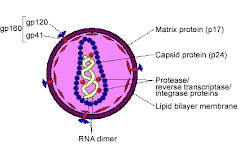"Whether marijuana is more potent today than it was 30 or 40 years ago is at the center of much debate. The U.S. federal government has released information saying that the levels of potency have risen anywhere from 10 to 25 times since the 1960s. Is this a myth or reality?
Testing for Marijuana
An estimated 20 million workers are drug-tested annually in the United States at a cost of more than $1 billion. The body metabolizes THC into about five metabolites before passing it into the body's urine, so drug tests are designed to detect the metabolites instead of THC. Detectable amounts of these metabolites remain in the system for several days to several weeks following marijuana use, depending on the level of use.
The most common test for detecting marijuana or any drug is the immuno-assay. In this test, the urine is mixed with a solution containing an antibody specific to certain metabolites. The antibody is usually tagged with a fluorescent dye or radioactive substance. The amount of fluorescent light or radioactivity is measured to determine the concentration of metabolites in the sample.
Gas chromatography/mass spectrometry may also be used to test for THC metabolites.
"There's no question that marijuana, today, is more potent than the marijuana in the 1960s. However, if you were to look at the average marijuana potency which is about 3.5 percent, it's been relatively stable for the last 20 years. Having said that, it's very important that what we have now is a wider range of potencies available than we had in the 1970s, in particular," Director of the National Institute on Drug Abuse Alan Leshner said in 1999 while testifying in front of the U.S. House Subcommittee on Crime.
Those who support the legalization of marijuana say that the data is skewed because testing was only performed on marijuana of specific geographic origins in the 1960s and 1970s, and therefore is not representative of marijuana potency overall. Officials obtained the samples from a type of Mexican marijuana that is known to contain low levels of THC -- 0.4 to 1 percent. When these levels are compared to other types of marijuana, it looks as if potency levels have risen in the last 30 years.
Typical THC levels, which determines marijuana potency, range from 0.3 to 4 percent. However, some specially grown plants can contain THC levels as high as 15 percent. Several factors are involved in determining the potency of a marijuana plant, including:
* Growing climate and conditions
* Plant genetics
* Harvesting and processing
The time at which the plant is harvested affects the level of THC. Additionally, female varieties have higher levels of THC than male varieties. As a cannabis plant matures, its chemical composition changes. During early development, cannabidiolic acid is the most prevalent chemical. Later, cannabidiolic acid is converted to cannabidiol, which is later converted to THC when the plant reaches its floral maturation.
To determine the average potency levels of marijuana, researchers need to examine a cross section of cannabis plants, which wasn't done in the 1960s and 1970s. This makes it difficult to make accurate comparisons between the THC levels of that time period and the THC levels of today."
Wednesday, September 19, 2007
"Marijuana's" Potency
Posted by
Boop
at
1:55 AM
0
comments
![]()
Tuesday, September 18, 2007
"Marijuana's" Other Physiological Effects
"In addition to the brain, the side effects of marijuana reach many other parts of the body. Marijuana is filled with hundreds of chemicals, and when it is burned, hundreds of additional compounds are produced. When marijuana is inhaled or ingested in some other form, several short-term effects occur. Some of the marijuana's side effects are:
* Problems with memory and learning
* Distorted perception
* Difficulty with thinking and problem solving
* Loss of coordination
* Increased heart rate
* Anxiety, paranoia and panic attacks
The initial effects created by the THC in marijuana wear off after an hour or two, but the chemicals stay in your body for much longer. The terminal half-life of THC is from about 20 hours to 10 days, depending on the amount and potency of the marijuana used. This means that if you take one milligram of THC that has a half-life of 20 hours, you will still have 0.031 mg of THC in your body more than four days later. The longer the half-life, the longer the THC lingers in your body.
The Munchies
One peculiar phenomenon associated with marijuana use is the increased hunger that users feel, often called the "munchies." Research shows that marijuana increases food enjoyment and the number of times a person eats each day, according to the National Institutes of Health.
Until recently, the munchies were a relative mystery. However, a recent study by Italian scientists may explain what happens to increase appetite in marijuana users. Molecules called endocannabinoids bind with receptors in the brain and activate hunger.
This research indicates that endocannabinoids in the hypothalamus of the brain activate cannabinoid receptors that are responsible for maintaining food intake. The results of the study were published in an April 2001 issue of the scientific journal Nature.
The debate over the addictive capacity of marijuana continues. Ongoing studies now show a number of possible symptoms associated with the cessation of marijuana use. These symptoms most commonly include: irritability, nervousness, depression, anxiety and even anger. Other symptoms are restlessness, severe changes in appetite, violent outbursts, interrupted sleep or even insomnia. In addition to these possible physical effects, psychological dependence usually develops because a person's mind craves the high that it gets when using the drug.
Beyond these effects that marijuana has, marijuana smokers are susceptible to the same health problems as tobacco smokers, such as bronchitis, emphysema and bronchial asthma. Other effects include dry-mouth, red eyes, impaired motor skills and impaired concentration. Long-term use of the drug can increase the risk of damaging the lungs and reproductive system, according to the U.S. Drug Enforcement Agency (DEA). It has also been linked to heart attacks.
Medicinal Uses
Although marijuana is known to have negative effects on the human body, there is a raging debate over the use of medicinal marijuana. Some say that marijuana should be legalized for medical use because it has been known to suppress nausea, relieve eye pressure, decrease muscle spasms, stimulate appetite, stop convulsions and eliminate menstrual pain. Because of its therapeutic nature, marijuana has been used in the treatment of several conditions including: cancer and AIDS (to supress nausea and stimulate appetite), glaucoma (to alleviate eye pressure), epilepsy (to stop convulsions, and multiple sclerosis (to decrease muscle spasms).
Others believe the negative effects of marijuana usage outweigh the positive. There are currently nine U.S. states that have legalized marijuana for medical purposes: Alaska, Arizona, California, Colorado, Hawaii, Maine, Nevada, Oregon and Washington."
Posted by
Boop
at
5:20 PM
0
comments
![]()
Labels: marijuana, physiological effects
"Marijuana's" Effect On The Brain
"THC is a very potent chemical compared to other psychoactive drugs. An intravenous (IV) dose of only one milligram (mg) can produce serious mental and psychological effects. Once in your bloodstream, THC typically reaches the brain within seconds after it is inhaled and begins to go to work.
Marijuana users often describe the experience of smoking marijuana as initially relaxing and mellow, creating a feeling of haziness and light-headedness. The user's eyes may dilate, causing colors to appear more intense, and other senses may be enhanced. Later, feelings of a paranoia and panic may be felt by the user. The interaction of the THC with the brain is what causes these feelings. To understand how marijuana affects the brain, you need to know about the parts of the brain that are affected by THC. Here are the basics:
* Neurons are the cells that process information in the brain. Chemicals called neurotransmitters allow neurons to communicate with each other.
* Neurotransmitters fill the gap, or synapse, between two neurons and bind to protein receptors, which enable various functions and allow the brain and body to be turned on and off.
* Some neurons have thousands of receptors that are specific to particular neurotransmitters.
* Foreign chemicals, like THC, can mimic or block actions of neurotransmitters and interfere with normal functions.
In your brain, there are groups of cannabinoid receptors concentrated in several different places. These cannabinoid receptors have an effect on several mental and physical activities, including:
* Short-term memory
* Coordination
* Learning
* Problem solving
Cannabinoid receptors are activated by a neurotransmitter called anandamide. Anandamide belongs to a group of chemicals called cannabinoids. THC is also a cannabinoid chemical. THC mimics the actions of anandamide, meaning that THC binds with cannabinoid receptors and activates neurons, which causes adverse effects on the mind and body.
High concentrations of cannabinoid receptors exist in the hippocampus, cerebellum and basal ganglia. The hippocampus is located within the temporal lobe and is important for short-term memory. When the THC binds with the cannabinoid receptors inside the hippocampus, it interferes with the recollection of recent events. THC also affects coordination, which is controlled by the cerebellum. The basal ganglia controls unconscious muscle movements, which is another reason why motor coordination is impaired when under the influence of marijuana."
Posted by
Boop
at
10:12 AM
0
comments
![]()
"Marijuana" and the Body
"Every time a user smokes a marijuana cigarette or ingests marijuana in some other form, THC and other chemicals enter the user's body. The chemicals make their way through the bloodstream to the brain and then to the rest of the body. The most powerful chemical in marijuana is THC (delta-9-tetrahydrocannabinol), which is primarily responsible for the "high" associated with the drug.
The most common way of using marijuana is smoking. Smoking is also the most expedient way to get the THC and other chemicals into the bloodstream. When the smoke from marijuana is inhaled, the THC goes directly to the lungs. Your lungs are lined with millions of alveoli, the tiny air sacs where gas exchange occurs. These alveoli have an enormous surface area -- 90 times greater than that of your skin -- so they make it easy for THC and other compounds to enter the body. The smoke is absorbed by the lungs just seconds after inhaling.
After inhaling marijuana smoke, its chemicals are distributed throughout the body.
You can also eat marijuana. In this case, the marijuana enters the stomach and the blood absorbs it there. The blood then carries it to the liver and the rest of the body. The stomach absorbs THC more slowly than the lungs. When marijuana is eaten, the levels of THC in the body are lower, but the effects last longer."
Posted by
Boop
at
6:55 AM
0
comments
![]()
Labels: body, marijuana, smoking marijuana
What Is "Marijuana" ?

"Although banned by the U.S. federal government in 1937, it is estimated that 14.6 million Americans use marijuana, which is roughly the population of Calcutta, India. The United States drug market is one of the world's most commercially viable and attracts drug traffickers from every corner of the globe. On American soil, marijuana costs between $400 and $2000 per pound. A pound of higher quality marijuana, known as sinsemilla, costs between $900 and $6,000.
Marijuana comes from the Cannabis Sativa plant and is the most commonly used illicit drug in the United States.
Marijuana is the buds and leaves of the Cannabis sativa plant. This plant contains more than 400 chemicals, including delta-9-tetrahydrocannabinol (THC), the plant's main psychoactive chemical. THC is known to affect our brain's short-term memory. Additionally, marijuana affects motor coordination, increases your heart rate and raises levels of anxiety. Studies also show that marijuana contains cancer-causing chemicals typically associated with cigarettes."
Posted by
Boop
at
2:05 AM
0
comments
![]()
Labels: effects, increases heart rate, marijuana, origins

















